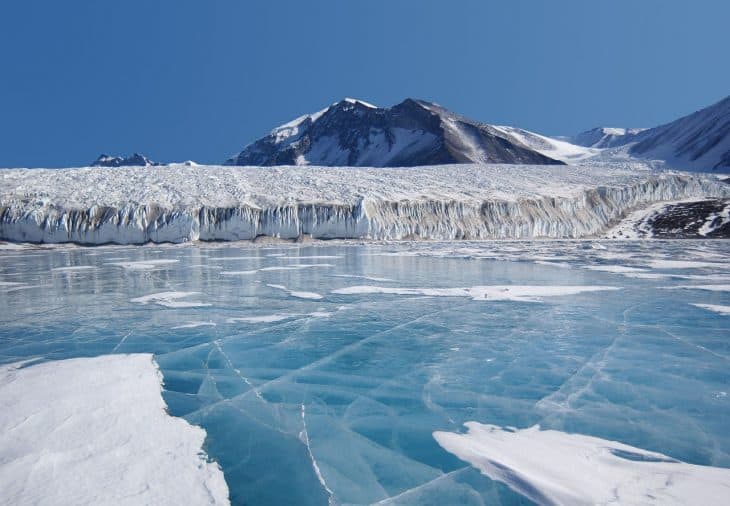
Antarctica’s reputation as a frozen land at the bottom of the world might make it seem an uninteresting place, but nothing can be further from the truth. There are plenty of interesting facts about the southernmost continent. You just have to know where to look, just like these Antarctica facts.
- Antarctica has a surface area of over 14 million km².
- Depending on the season, there are only between 1000 to 5000 people in Antarctica.
- The Antarctic Ice Sheet averages a thickness of 1.9 km.
- 80% of the Earth’s freshwater is in Antarctica’s ice.
- On average, the Antarctic cold reached -63°C.
- Belief in Antarctica’s existence goes back to the 1st century AD.
- Captain James Cook crossed the Antarctic Circle three times in the late-18th century.
- The Norwegian-Swedish whaling ship the Antarctic made the first landing on Antarctica in 1895.
- Ernest Shackleton’s 1907 expedition to Antarctica reached the magnetic south pole for the first time.
- Roald Amundsen became the first man to reach the geographic south pole on December 14, 1911.
- Caroline Mikkelsen became the first woman to set foot on Antarctica in 1935.
- 12 nations implemented the Antarctic Treaty System on June 23, 1961.
- Pam Young, Jean Pearson, Lois Jones, Eileen McSaveney, Kay Lindsay and Terry Tickhill became the first women to reach the south pole in 1969.
- David Henry Lewis of New Zealand single-handedly sailed to Antarctica in 1972.
- Børge Ousland became the first man to cross Antarctica alone from 1996 to 1997.
- Antarctica’s name comes from the Greek antarktiké, meaning opposite to the Arctic.
- No military, mining, or economic activity can take place on Antarctica by international law.
- There are 70 research stations in Antarctica.
- 40 research stations operate all year round.
- 30 other research stations only operate in the summer.
Antarctica Facts Infographics
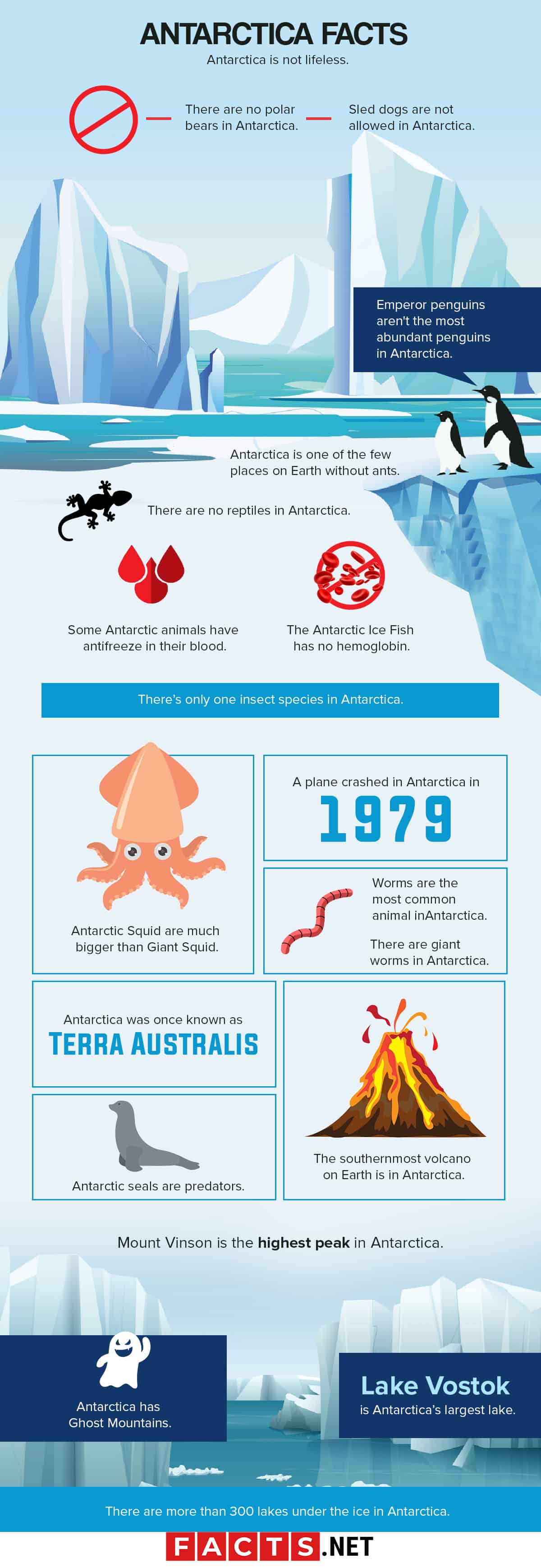
Antarctica is not lifeless.
Antarctica is one of the harshest places on Earth. Even in summer, the temperature never rises above zero, while in winter the sun never rises. There is little or no running water. In fact, Antarctica’s landscape is what’s called a polar desert. Despite all that, life still found a way to survive in such a hard land. There aren’t any grass, trees or similar plant life in Antarctica. Instead, there is and abuncande of lichen and bacterial colonies.
This includes the shores of the sea, or on the slopes and vents of Antarctica’s volcanoes. Animal life is also plentiful in Antarctica, with Emperor Penguins being the most famous. Other animal life on Antarctica includes several species of seals, birds, and of course fish and shellfish. In fact, the waters of the Antarctic continent teem with life. You only have to look.
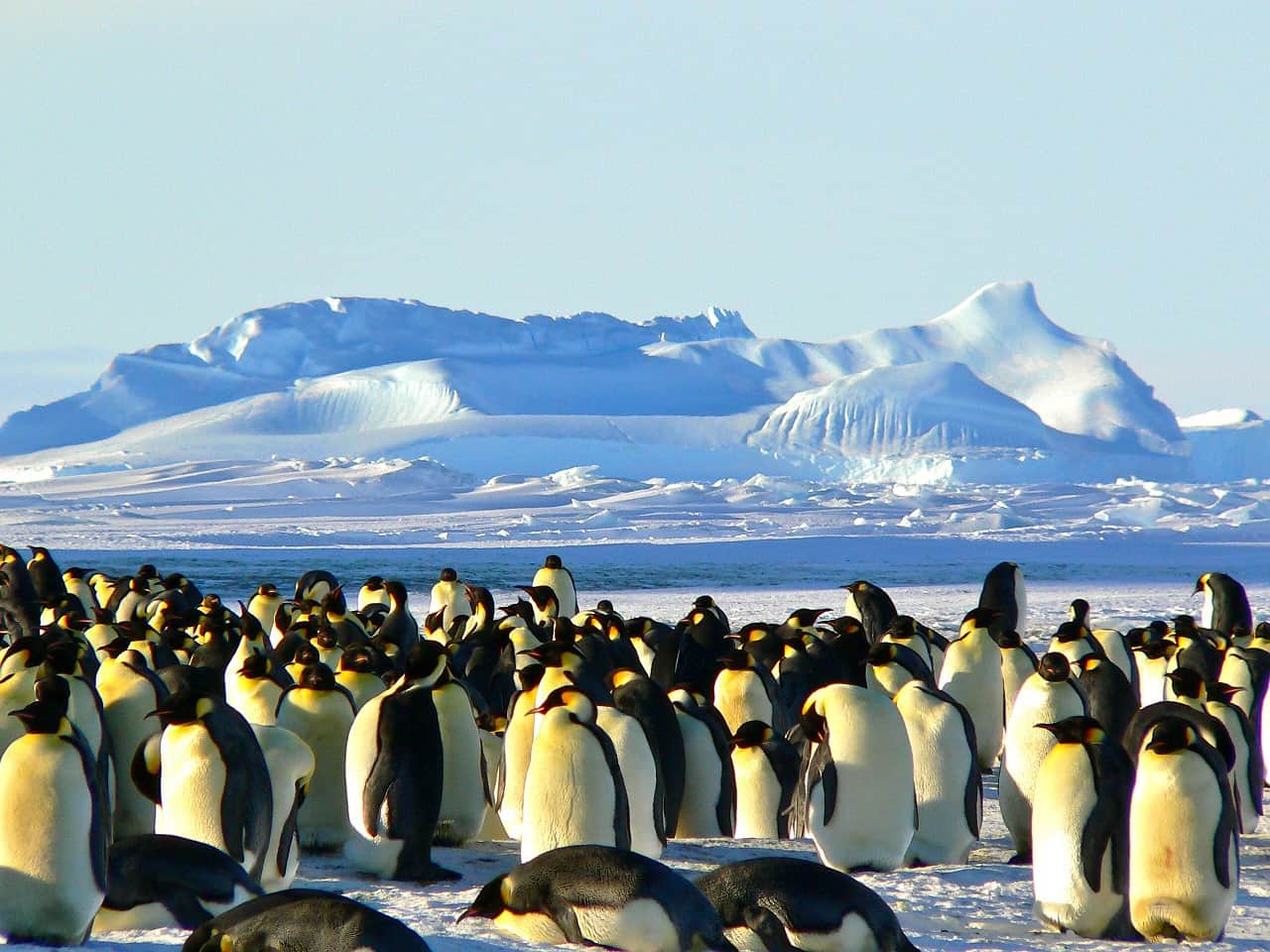
Worms are the most common animal in Antarctica.
People usually picture penguins when they think about the animals in Antarctica. While they’re the most visible, they’re not actually the most common. The most common animal in Antarctica are Nematodes or roundworms.
Scientists say they live in the upper layers of the ice sheets, where they live in cycles of freezing and melting. When there’s not enough water for them to live, the nematodes freeze themselves. But once there’s water, they defrost themselves and come back to life.
Sled dogs are not allowed in Antarctica.
Sled dogs pulled the sleds and sleighs of the first explorers on Antarctica, and worked for scientists for decades. However, since 1994, dogs haven’t been allowed any longer in Antarctica. Scientists feared dogs might spread diseases to native animals or treat them as prey, so they prohibited dogs to protect the continent’s biodiversity. Bet you didn’t expect that from Antarctica facts?
There are no polar bears in Antarctica.
Polar bears are exclusive to the Arctic. It might come as a disappointment, but that’s a definite example of Antarctica facts.
Antarctica is one of the few places on Earth without ants.
One of the cooler Antarctica facts: Because Antarctica is isolated from the rest of the world, its biodiversity is limited. The extreme cold also keeps other species like ants from ever surviving in Antarctica.
There are no reptiles in Antarctica.
Whether it’s snakes, lizards, or any other reptiles, you won’t find any of them in Antarctica. The reasons are the same as ants. Reptiles can’t regulate their own temperature, and being in the Antarctic would only freeze their already cold blood. How’s that for Chilling Antarctica facts?

Some Antarctic animals have antifreeze in their blood.
No, it’s not actual ethylene glycol, which is poisonous. Scientists call Antarctic animals’ natural antifreeze glycoproteins. This antifreeze raises the freezing point of liquid to keep it from freezing in the cold.
Animals with glycoproteins include the Antarctic eelpout, inland bacteria, and lichens. Now that’s one for cool Antarctica facts.
The Antarctic Ice Fish has no hemoglobin.
Antarctic ice fish are the only vertebrates with no red blood cells. Instead, their blood plasma dissolves oxygen and carries it around in their bodies. This reduces their blood’s ability to carry oxygen by over 90%. The ice fish compensates with a slow metabolism and the fact that oxygen is more soluble in cold than warm water.
Scientists are still unsure why the fish evolved this way, since it’s not an adaptation to cold environments. How’s that for unique Antarctica facts?
There’s only one insect species in Antarctica.
The only insect in Antarctica is called the Belgica Antarctica, or the Antarctic Midge. It’s a small and flightless insect, measuring between 2 to 6 mm long. This also makes it the largest, land-only species in Antarctica. Seals and penguins are bigger, but they spend much of their time in the water. Definitely one of the more mind-boggling Antarctica facts.
Emperor penguins aren't the most abundant penguins in Antarctica.
Emperor Penguins are only the most well-known of their kind. At least 17 other species of penguins live in Antarctica, including King Penguins, Chinstrap Penguins, and the Adélie penguin. Definitely one of the Antarctica facts you have to see for yourself.
Antarctic seals are predators.
Their cute appearances in popular fiction, circuses, and marine parks make people think otherwise, but leopard seals are predators. In the wild, they hunt birds, fish, and even their own kind.
In 2003, marine biologist Kirsty Brown died after getting attacked by a Leopard Seal in Antarctica. The seal measured 4 meters long and weighed 449 kg. Traveling at 40 km/h in the water, the seal caught Brown while she snorkeled underwater off Rothera Station. Despite efforts to help her by other scientists, the seal mauled Brown to death. This was the first known human casualty of a leopard seal attack.
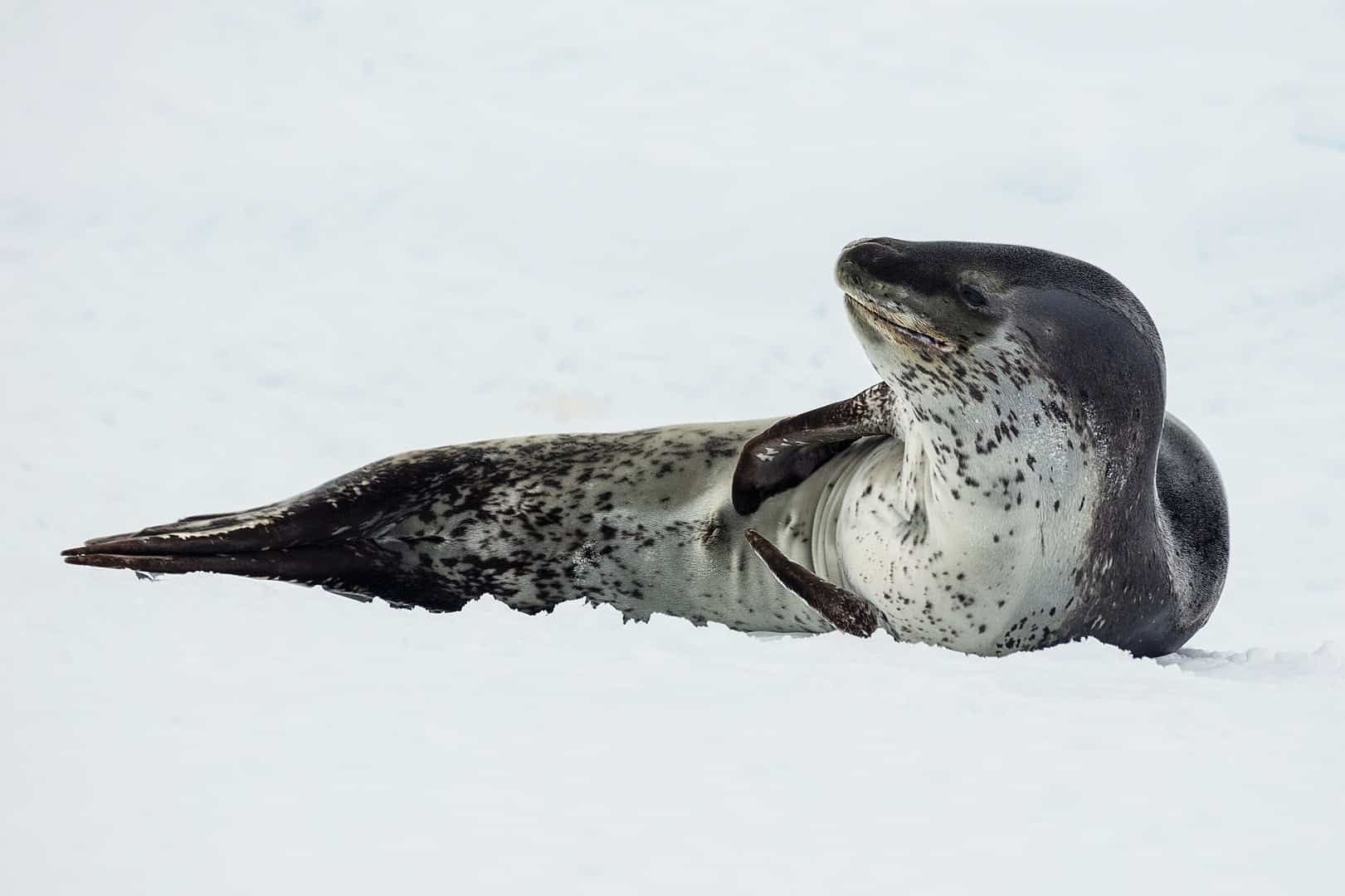
There are giant worms in Antarctica.
They’re called the Eulagisca gigantea, or the Antarctic Scale Worm. They grow up to 20 cm long, and 10 cm wide. Their jaws make up a quarter of their body, with well-developed teeth pointing to them being carnivores. Scientists today are still unsure as to the worms’ diet.
Antarctic Squid are much bigger than Giant Squid.
What’s bigger than a giant? Apparently, Antarctic squid are. In fact, they’re also called Colossal Squid to set them apart. While they both have a maximum length of about 10 meters, Colossal Squid can get heavier. At their heaviest, Giant Squid only weighs at most 275 kg. In contrast, Colossal Squid weighs at most 500 kg, though recovered beaks point to specimens of up to 600 kg. Talk about shocking Antarctica facts.
Antarctica was once known as Terra Australis.
It means southern land in Latin. The name goes back to ancient times when scholars theorized about a continent south of Africa and Asia. This continent was expected to have a landmass equal to that of the northern lands. Terra Australis instead gave Australia’s name, while Antarctica became the expected but undiscovered continent’s name. The name entered formal use in the 1890s, through the Scottish mapmaker John Bartholomew.
A plane crashed in Antarctica in 1979.
The Mount Erebus Disaster of November 28, 1979 took 237 passengers and 20 crew members’ lives. Air New Zealand Flight 901 was an aerial tour of Antarctica from Auckland. They were only supposed to fly over Antarctica for a few hours before returning to Auckland.
Instead, a change in the automated flight path and a failure to inform the flight crew caused the plane to fly into Mount Erebus. Definitely one of the more tragic Antarctica.
The southernmost volcano on Earth is in Antarctica.
Mount Erebus stands on Antarctica’s Ross Island at 3.8 km high. It is the second-highest peak in Antarctica and an active volcano. Scientists estimate Mount Erebus has erupted many times over the last 1 million years.
The most recent eruption was in 1972 and continued until 1992. The eruption was a gentle one, lava pooling in the volcano’s crater and flowing down its slopes many times over the years. At present, scientists say Mount Erebus is dormant but still monitor the volcano regardless.
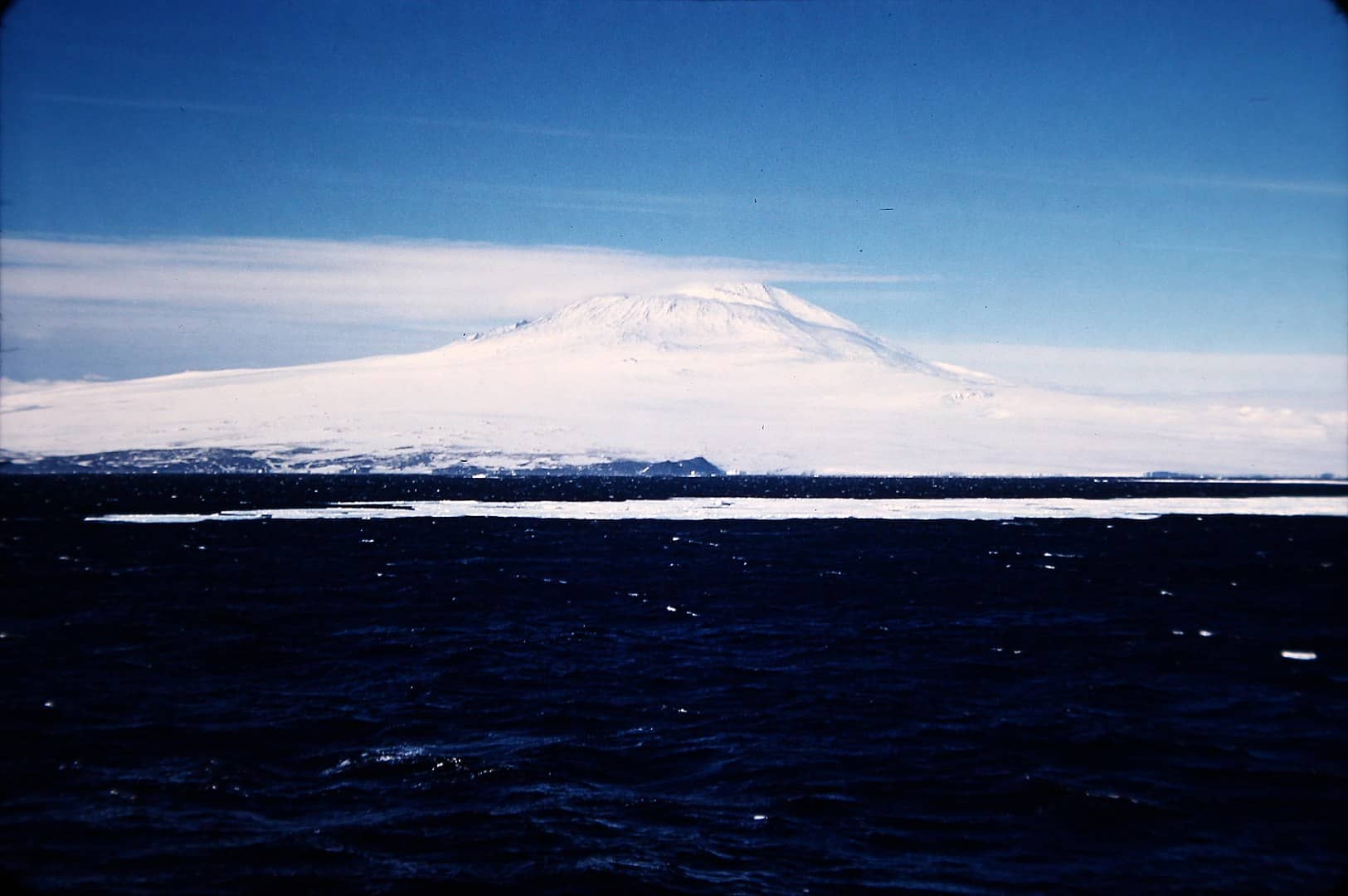
Mount Vinson is the highest peak in Antarctica.
Located in West Antarctica, Mount Vinson stands at a height of 4.89 km high. It’s not a volcanic peak, but a mountain formed by deformation of the continental landmass from geological processes. Its name comes from a US Congressman from Georgia, Carl Vinson, in memory of his support for Antarctic expeditions. Nicholas Clinch led the first men up the mountain to its peak in 1966.
Antarctica has Ghost Mountains.
The Gamburtsev Mountains run for about 1,200 km across the continent in East Antarctica. Its highest peak rises about 2.7 km, but it’s buried by around 600 meters of ice and snow. This mountain range has been dubbed the Ghost Mountains because its entirely buried under ice and snow.
Lake Vostok is Antarctica’s largest lake.
Vostok means east in Russian. It was the name given to the Soviet program that put the first man in space, and to a Russian exploration ship in the early-19th century. It’s also the name of a Russian research station in East Antarctica, which stands on the ice above Lake Vostok.
Lake Vostok isn’t an underground lake, but a subglacial one. The lake is not encased by earth and rock, but the ice of a glacier. Study shows the thickness of the ice is about 4 km to the lake’s surface. The lake itself has an area of 12,500 km², and a volume of 12,500 km³. Study also shows that while the glacier has existed for around 400,000 years, the lake is older. Drill samples point to the lake existing as far back as 25 million years ago.
There are more than 300 lakes under the ice in Antarctica.
The heat from under the Earth keeps their water liquid instead of freezing like the glaciers above them. Many of these lakes have connections to each other underground and exchange water between them. Others aren’t connected, with scientists saying such lakes are time capsules and home to life forms unchanged for millions of years. Scientists also say there may be lakes they haven’t discovered yet under all the ice. How’s that for cool Antarctica facts?
Antarctica is divided into two.
In a strange case of geography, the Transantarctic Mountains divide the continent roughly along the Greenwich Meridian. Everything to the west of the Weddell Sea but east of the Ross Sea is West Antarctica. The rest of the continent make up East Antarctica.
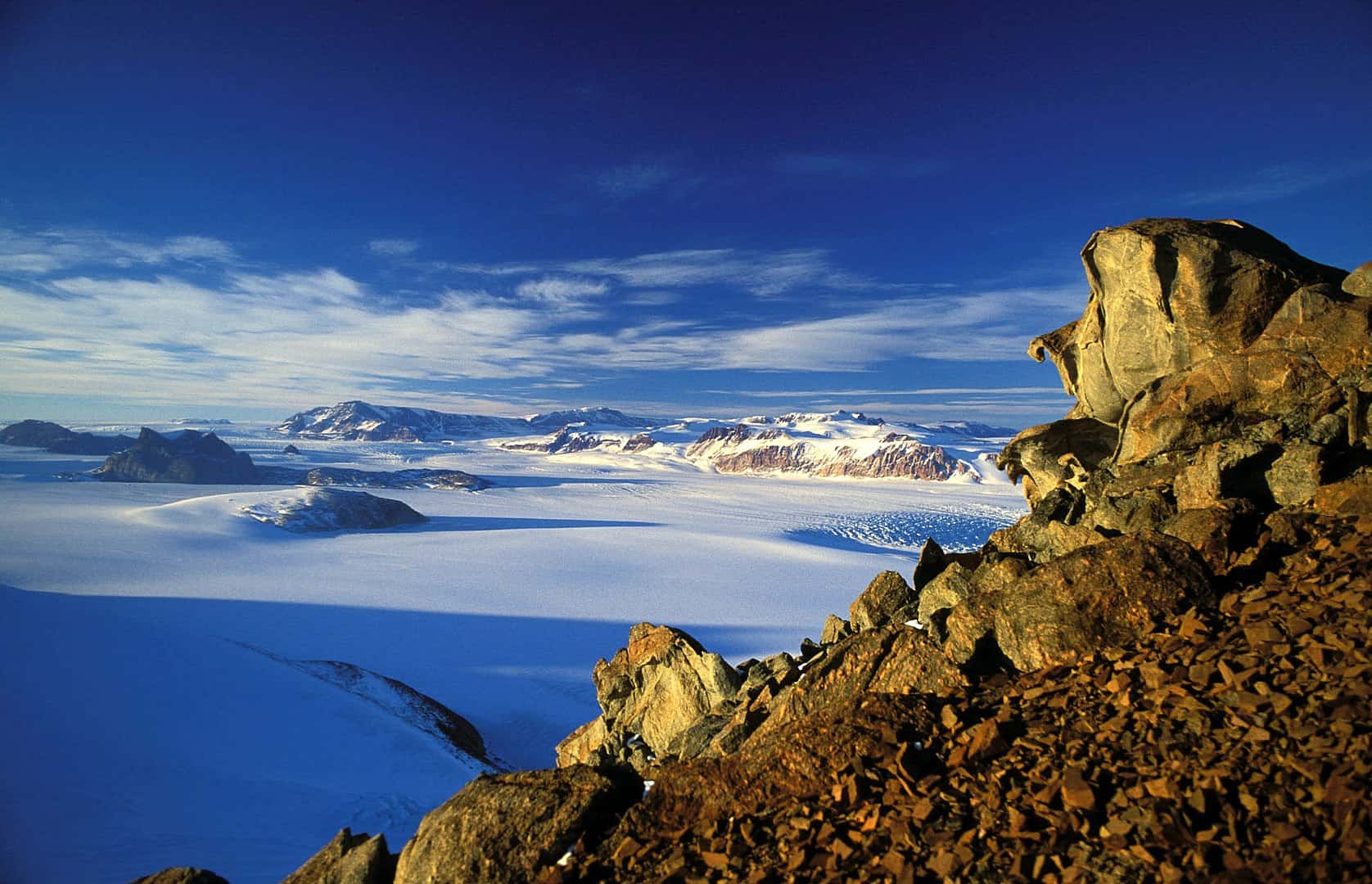
East Antarctica is colder than West Antarctica.
This is because the eastern part of the continent has a higher elevation compared to the west. This higher elevation is partly due to the fact that most of Antarctica is in the east. This means the ice forms on top of the land instead of on top of the water, as is the case in much of the west.
Antarctica is colder than the Arctic.
There are 3 reasons for this: First is that the Arctic is only ice floating on water. This limits how cold it can get, as the water beneath will always be warmer than land in the same situation, like in Antarctica. The second reason is the way the Earth is positioned to the Sun. During winter, the Earth is always at its furthest from the Sun, while in summer, it is at its closest. This makes Antarctic winters and summers colder and warmer than their Arctic counterparts. Finally, Antarctica has a higher elevation than the Arctic, by about 3 km on average, helping make it colder than the Arctic.
Antarctica was not always frozen.
Earth’s crust is divided into a series of plates, including the continents. Those plates float on a thin layer of lava between the crust and the rest of the mantle. Between the currents of the lava and the Earth’s oceans acting as a lubricant, these plates move around all the time. This movement causes earthquakes, and is the reason why the Earth today looks nothing like it was millions of years ago.
For example, when dinosaurs walked the Earth, East Antarctica was a land of ferns. For its part, vast forests like those in Northern Europe today covered West Antarctica. Antarctica only became covered in ice starting around 15 million years ago, as it drifted towards the Earth’s south pole.
Antarctica has plenty of natural resources.
Study shows that the Transantarctic Mountains have rich coal deposits. There is also evidence of rich oil and gas deposits in the waters around the continent. Iron ore is also plentiful in the Princes Charles Mountains. There are also known deposits of other metals like platinum, copper, chromium, nickel, and even gold. The exploitation of these resources is not allowed under the Antarctic Treaty, but it is set to expire in 2048.
Some economic activity exists in Antarctica.
These are fishing and tourism, and both are heavily regulated. Fishing, is only allowed offshore, and fish farms are not allowed on Antarctica itself. Despite these limitations, over 100,000 tons of fish get caught every year in Antarctic waters. As for tourism, it’s limited to aerial flyovers of parts of the continent, and limited time on the ground in designated areas. Over 30,000 people tourists visit the continent every year.
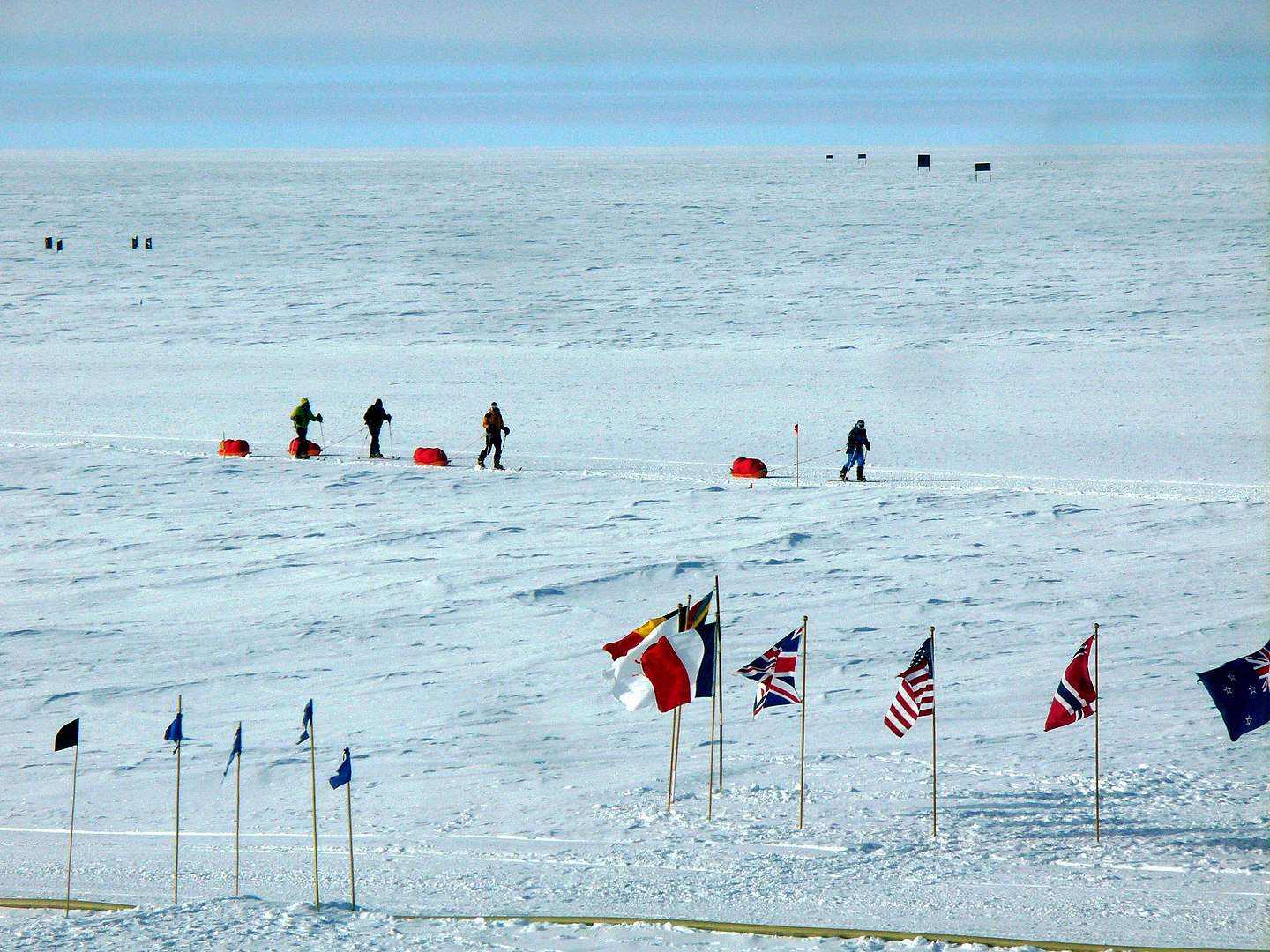
Drones aren’t allowed in Antarctica.
Drones tend to disturb the wildlife, so they’re not allowed on the continent. Scientists have special permits for drones to study the environment and even wildlife.
7 countries have claims on Antarctica.
Britain, France, and Norway, and both Australia and New Zealand own territories in Antarctica. Chile and Argentina also have claims on Antarctica. Despite this, there’s been no development at all of the Antarctic lands, as per international treaty forbidding such development.
There are two settlements in Antarctica.
These two settlements developed around permanent research stations on the continent. One is Esperanza Base on Trinity Peninsular, which was founded by Argentina. The other is Villa Las Estrellas on King George Island, founded by Chile. Both have a permanent population of less than a hundred people.
Emilio Palma was the first person born in Antarctica.
Captain Jorge Palma, led the Argentine Army detachment at Esperanza Base in Antarctica’s Trinity Peninsula. The Argentinian government sent Emilio’s mother when she was 7 months pregnant to complete her pregnancy in Antarctica. They did this in hopes of claiming Antarctic soil as their territory. She gave birth on January 7, 1978, to a healthy boy named Emilio Palma. Despite the success of her pregnancy, Argentina’s claims remain contested by the international community.
Scientists study various fields of science in Antarctica.
Biologists study Antarctica’s unique biosphere with little to no signs of human interference. Geologists collect evidence and piece together Antarctica’s history from today back to when it was part of the Gondwana supercontinent. Glaciologists study the Antarctic Ice Sheet, learning how it formed and how it affects the land under it. Even doctors do research in Antarctica, such as how viruses work and how the human body adapts to such a harsh environment.
Antarctica is a major center of astronomy and physics research.
Antarctica’s undeveloped state means the skies above the continent are the clearest in the world. Antarctica’s distance from the rest of the world also means fewer contaminants to clog the sky. Astronomy research in Antarctica studies both the visible universe, and the unobserved one.
Antarctica’s clear atmosphere is well-suited for the study of background cosmic radiation and is home to the largest neutrino telescope in the world. Buried 2 km deep under the ice, the IceCube Neutrino Observatory uses the ice as both a mirror and detector for the small and fast particles.
There’s a hole in the ozone layer above Antarctica.
One common chemical used in early refrigerators, freezers, and air conditioners were chlorofluorocarbons (CFCs). While being good coolants, they had a dangerous side-effect in the atmosphere. CFCs strongly-react with ozone, a special molecule of oxygen that prevents ultraviolet (UV) radiation from reaching the surface. Decades of use of CFCs broke down enough ozone to open a hole in the ozone layer.
Due to wind direction, most of the CFCs ended up over Antarctica, where the hole opened up. The increase in UV radiation caused cancer rates to spike. Predictions also showed UV radiation’s effect on harvests. As a result, Montreal Protocol banned the use of CFCs in 1987. As CFCs in the atmosphere dropped, the hole in the ozone layer began to heal. As of 2019, scientists say the hole is at its smallest since 1982. They also say they expect the hole to close in full by 2070. There’s one for hopeful Antarctica facts.
Scientists recovered plenty of meteorites in the Antarctic.
Antarctica’s frozen landscape preserves meteorites that pass through the atmosphere very well. On other continents, warm and moist conditions easily weather landing meteorites.
However, Antarctica is cold and dry, with little to no liquid water and life present. This allows scientists to recover meteorites in largely-pristine states, all major finds for the study of astronomy.
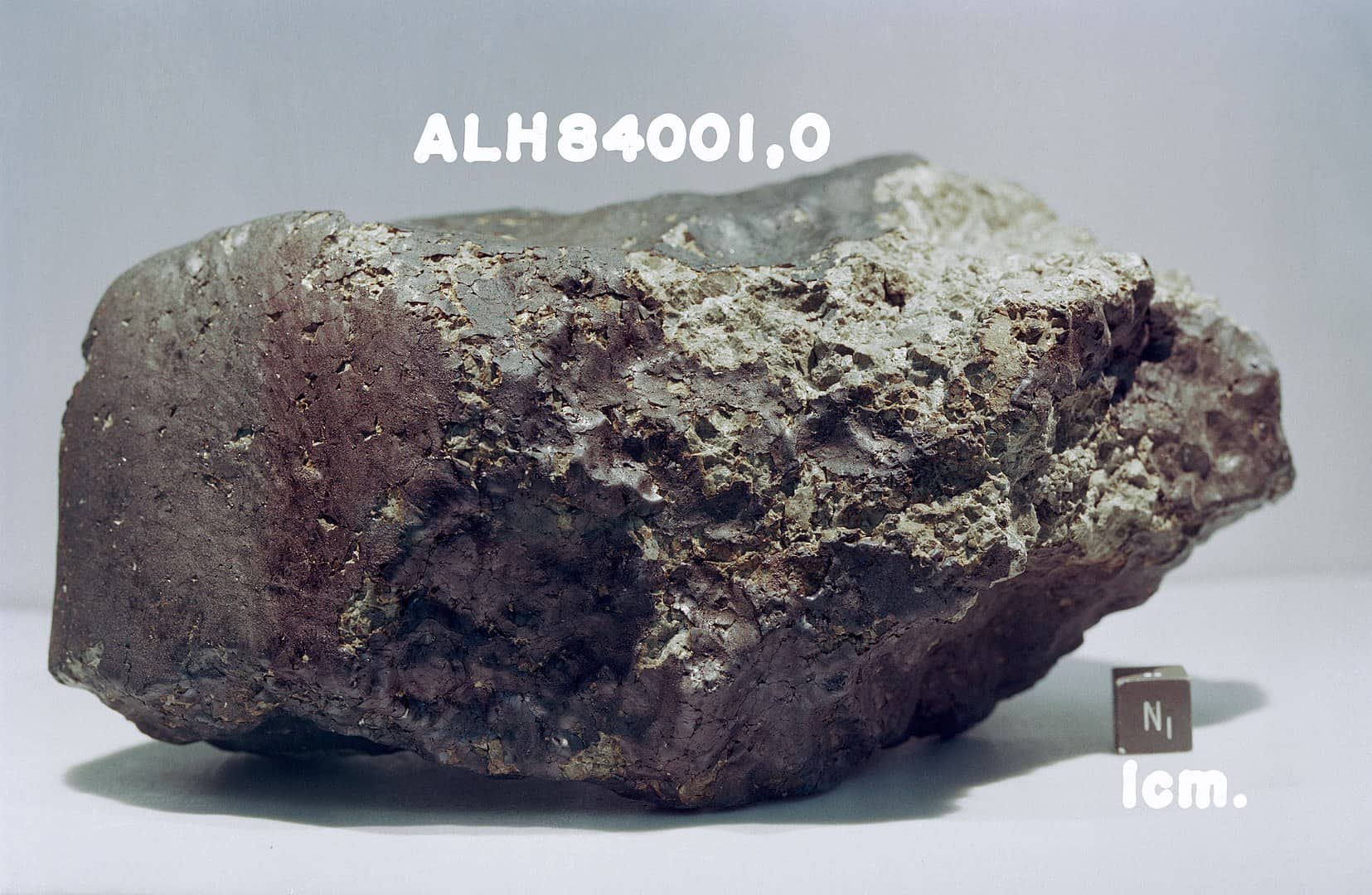
Scientists use ice cores to study Antarctica’s ice.
Ever heard of tree rings? Ice cores are much like them. Just like tree rings, they tell how old a layer of ice is, and what happened in that time. Scientists extract them by drilling down through an ice sheet and pulling out a solid core of ice.
This is then studied under a microscope. Layers of snow added on top of the ice sheet every winter tell a lot about what happened during that year, including volcanic eruptions, weather patterns, and even asteroid impacts.
Antarctica is inaccessible in winter.
Limited infrastructure, bad weather, and the fact that the Sun never rises in winter makes Antarctica unreachable in the winter season. Scientists and staff who stay in the winter often experience cabin fever, having to get creative to deal with the isolation.
Usually, they take the time for personal study, like learning new languages. Other scientists even hold classes for their specific fields of science to scientists from other fields.
Scientists grow their own food.
It’s not enough to make them self-sufficient, but it’s enough to keep them from being completely-dependent on supply shipments. They can’t raise livestock, but scientists in Antarctica have indoor gardens and greenhouses to grow fresh fruits and vegetables in. How’s that for neat Antarctica Facts?
Not all of Antarctica’s ice is on land.
A large part of Antarctica’s ice formations extends from the continent’s edges and over the surrounding ocean. Thicker areas called ice shelves stay frozen all the time. Thinner areas called ice sheets melt in summer only to freeze again in winter.
Melting of ice sheets don’t add to ocean levels, as they’re already part of the global balance. However, it’s the melting of the ice shelves that causes ocean levels to rise.
Antarctica gets bigger in winter.
We’ve mentioned before how ice melts and freezes in a cycle during Antarctic summers and winters. However, another detail is how much this adds and subtracts to Antarctica’s surface area. Over the course of summer and winter, melting and freezing ice removes and adds over 30 million km² to Antarctica.
Antarctica grows warmer by the year.
This is the result of global warming, the heating of the planet as a whole by humans putting more and more greenhouse gases into the atmosphere. Studies conducted from 1957 to 2006 show that temperatures rose by 0.05 degrees Celsius per decade in those years. The warming in West Antarctica was especially-severe, with temperatures rising over 0.1 degrees Celsius per decade.
Melting caused by the rising temperatures somewhat mild at present, but it is gradually increasing. The collapse of the Larsen-B Ice Shelf in 2002 alarmed scientists as the beginning of a dangerous trend. Wilkins Ice Shelf’s collapse from 2008 to 2009 followed the said trend. The most recent case was a huge jump in temperatures early in 2020. Temperatures reached a peak of 18.3°C, beating the 2015 record of 17.5°C.
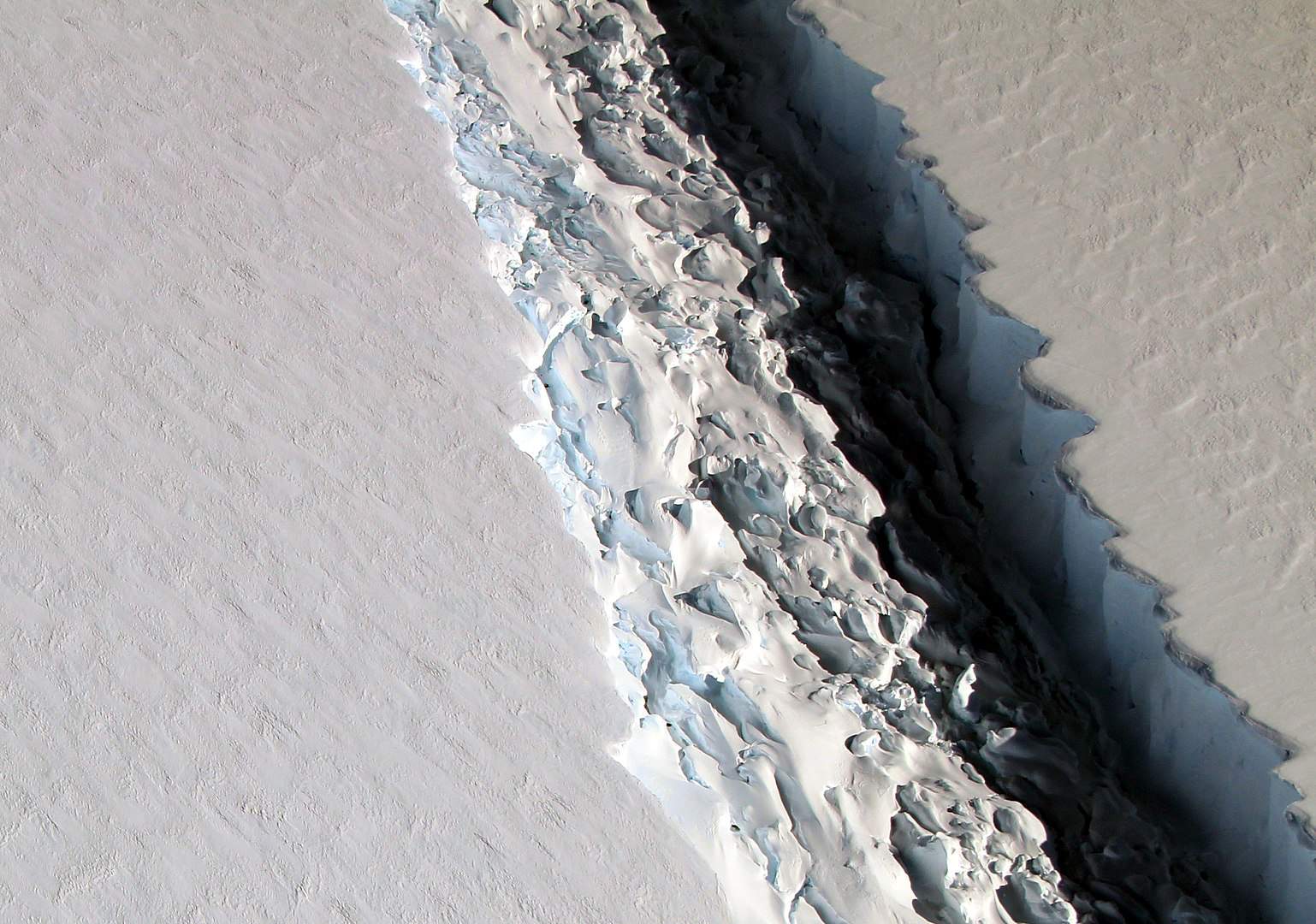
Antarctic warming’s caused by the ocean, not the atmosphere.
One of the more surprising Antarctica facts: Some scientists suspect that warmer oceans are melting the Antarctic ice, not the atmosphere. This hypothesis draws from the way inland ice sheets stay unaffected by global warming so far. In contrast, the coastal ice sheets and ice shelves melt more every year.
West Antarctica is one of the biggest potential causes of sea-level rise.
Out of the whole continent, it’s West Antarctica’s ice that’s most affected by global warming. Should the ice on this part of the continent melt, sea levels will rise by at least 3.3. meters. That increase is enough to cause the permanent flooding of low-lying places such as New Orleans and the surrounding Mississippi River Delta. Definitely one of the more alarming Antarctica facts.
Antarctica is the windiest continent.
The flat and unbroken central region of the continent allows winds to reach high speeds over vast distances. Average wind speeds reach up to 320 km/h. Anywhere else on the planet, wind speeds only reach this high during storms and similar weather phenomena.
The West Antarctic Rift is bigger than the Grand Canyon.
Running across West Antarctica, this rift isn’t very noticeable thanks to all the ice burying it. Scientists now know that the rift runs for over 3000 km, and spans around 700 km wide.
Compared this to the Grand Canyon, which is only about 446 km long, and 6 to 29 km wide, the West Antarctic Rift is much bigger. However, the Grand Canyon is 1.9 km deep, while the West Antarctic Rift is only 1.5 km deep.
Antarctica’s Dry Valleys are the driest part on Earth.
Well, they didn’t get that name for no reason. The air surrounding Antarctica’s Dry Valleys is so low in humidity that even with the extreme cold, snow doesn’t fall.
This leaves the valleys a barren stretch of landscape without even ice or snow. It’s still too cold for anything to grow, after all, and even if it wasn’t, nothing can grow without water particles in the air.
Fire is a major hazard in Antarctica.
Of course, it depends on where in Antarctica. Out in the wilderness, it’s not a problem, since there’s nothing to burn. However, it poses a threat to research stations. Even with how cold Antarctica is, the dryness of the air makes it easy for a fire to start and spread, and hard to extinguish. There’s one for ironic Antarctica facts.
Antarctica has blood falls.
From the name itself, Antarctica has a waterfall with what looks like blood gushing out. However, the coloring comes from an inland brine lake buried under ice.
Scientists attribute the strange color to the iron deposits underneath the lake, with flowing with the water. As it leaves the overlying glacier, the iron oxidizes with oxygen in the air, giving the water a blood-like color. How’s that for weird Antarctica facts?
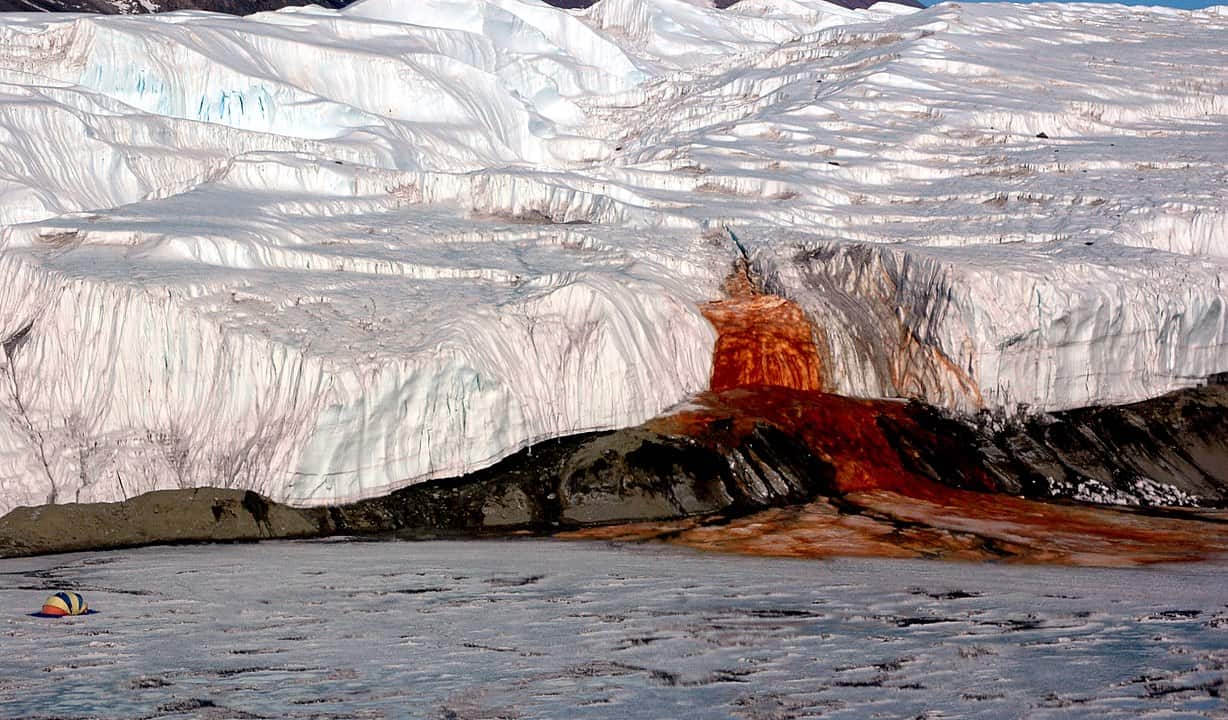
Antarctica has no time zone of its own.
There’s no need for Antarctica to establish an official timezone, as the continent has no government nor citizens of its own. Instead, the people in the research stations on the continent use the time zones of their countries of origin.
The largest iceberg in history came from Antarctica.
No, it’s not the one that sank the Titanic. Iceberg B-15 broke off from the Ross Ice Shelf in March 2000 and drifted north into the Atlantic Ocean. Measuring 295 km long and 37 km wide, the iceberg had a surface area of 11,000 km². As it drifted north, Iceberg B-15 began breaking apart into smaller icebergs. The largest of these fragments was Iceberg B-15A, with an area of 6,400 km². As of 2018, four small icebergs remain of Iceberg B-15 in the South Atlantic.
You don’t need to lose body parts to go to Antarctica.
There’s a misconception that everyone who goes to Antarctica needs to have their appendix and wisdom teeth removed first. However, this isn’t actually the case. Tourists go to Antarctica without having to lose any body part at all. The same goes for most scientists and other people in Antarctica.
There is some truth to the urban legend, since doctors need to get their appendix removed before getting posted to Antarctica. This removes the risk of them developing appendicitis while in Antarctica. With limited resources on the continent and the long trip to the nearest hospitals in Australia and New Zealand, it’s thought best to avoid the problem.
Wisdom teeth removal depends on whether or not the dentist prescribes it. All personnel sent to Antarctica see a dentist before leaving. If the dentist declares there’s a risk of major teeth issues in the time they’re planned to stay in Antarctica, then it must get resolved before departure.
One Russian doctor cut out his own appendix in Antarctica.
Leonid Rogozov was assigned to Novolazarevskaya Station from 1960 to 1961. During his stay, Rogozov developed appendicites. However, he was the only doctor in the station. As a result, Rogozov had to do surgery on himself, with only limited anesthesia. With help from a driver and a meteorologist, the surgery lasted for 2 hours.
Doctor Rogozov not only managed to remove his appendix but recovered fully. This success made him a celebrity in the Soviet Union, and earned him the Order of the Red Banner for Labor.
Metallica held a concert in Antarctica in 2013.
Here’s a particularly cool example of Antarctica facts: It even earned Metallica a world record as the only band to play in all 7 continents. Metallica’s Antarctic concert took place at Carlini Station for an hour. To protect the environment, the band played in a private room, with sound and images broadcast to audiences across the continent.
Antarctica hosts a marathon every year.
The Antarctica Marathon is held every year in February or March. The course runs for over 42 km across King George Island. It starts and finishes at Bellingshausen Station, and runs past Artigas, Frei, and Great Wall Bases. The marathon first took place in 1995 and continues to this day.
Vernadsky Research Station has the only bar in Antarctica.
The Vernadsky Research Station also houses the southernmost bar on Earth. Prior to being owned by Ukraine in 1996, the station was named the Faraday Station under British control. The bar retains the old name of Faraday Bar, even after the rest of the station switched to a Ukrainian name. Now there’s a fun example of Antarctica facts.
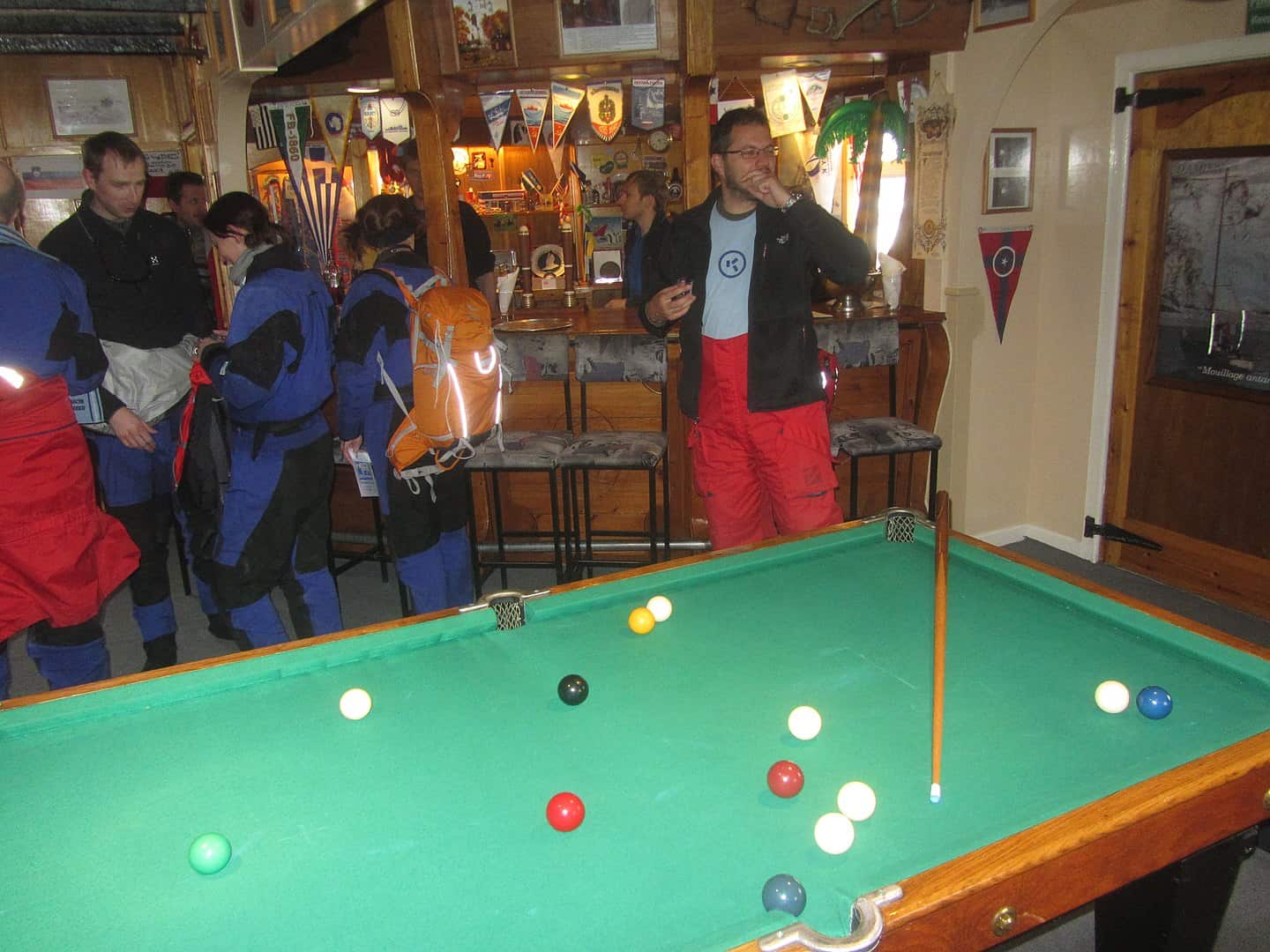
There is such a thing as the Antarctic Ocean.
It’s also called the Southern Ocean, distinct from the oceans to the north. Here, water from the Pacific, Atlantic, and Indian Oceans merge into one, surrounding the Antarctic continent. Geographers mark the 60th Parallel as the Southern Ocean’s northern boundary, with its opposite being the Antarctic coast.
Antarctica has its own ocean current.
It’s called the Antarctic Circumpolar Current, flowing from west to east around the continent. Ships use this current to move faster when going in the same direction. If going in the opposite direction though, the current slows ships down.
The current also helps keep Antarctica cold, by keeping warm water from coming close. It also helps nourish the continent’s rich marine life with its convection currents. That is warm water rises and cold water sinks, bringing nutrients with it across the levels of the water.
Crossing Antarctica is dangerous.
The ice on Antarctica isn’t smooth and uniform no matter what your eyes tell you. There are cracks and rifts in the ice, many of them hidden by thin ice that cover a fall of hundreds of meters. The glare of reflected sunlight makes it even harder to notice these dangers until you’re on top of them – and by then, it’s already too late.
A nuclear power station once operated in Antarctica.
The USA once built a small nuclear reactor in Antarctica to power the McMurdo Station in 1962. The reactor also provided heat to melt ice for water, and to purify wastewater for reuse. However, safety concerns led the USA to decommission the reactor in 1972. Since then, diesel-fueled generators have powered McMurdo Station.
Auroras aren’t as common in Antarctica as people think.
Aurora borealis, also known as northern or southern lights, appear as shimmering ribbons of light in the atmosphere. These lights are caused by high-energy particles from the Sun slipping through the Earth’s magnetic field and hitting the atmosphere. They’re usually seen in high northern or low southern latitudes, but even so, they’re a rare sight in Antarctica.

Airtime in Antarctica is limited.
Satellites are the only reliable way to communicate to and from Antarctica. Between the continent’s position and the satellite’s orbits, and there’s a daily limit to how long they can use the satellites. Because of this, scientists maximize their access to the satellite network.
Research data and other official communications are priorities for the network. Personal communications are the lowest priority, with people sometimes only getting as little as 10 minutes to access the network.
Was this page helpful?
Our commitment to delivering trustworthy and engaging content is at the heart of what we do. Each fact on our site is contributed by real users like you, bringing a wealth of diverse insights and information. To ensure the highest standards of accuracy and reliability, our dedicated editors meticulously review each submission. This process guarantees that the facts we share are not only fascinating but also credible. Trust in our commitment to quality and authenticity as you explore and learn with us.
